November 2 - 8, 2014: Issue 187
DAVID
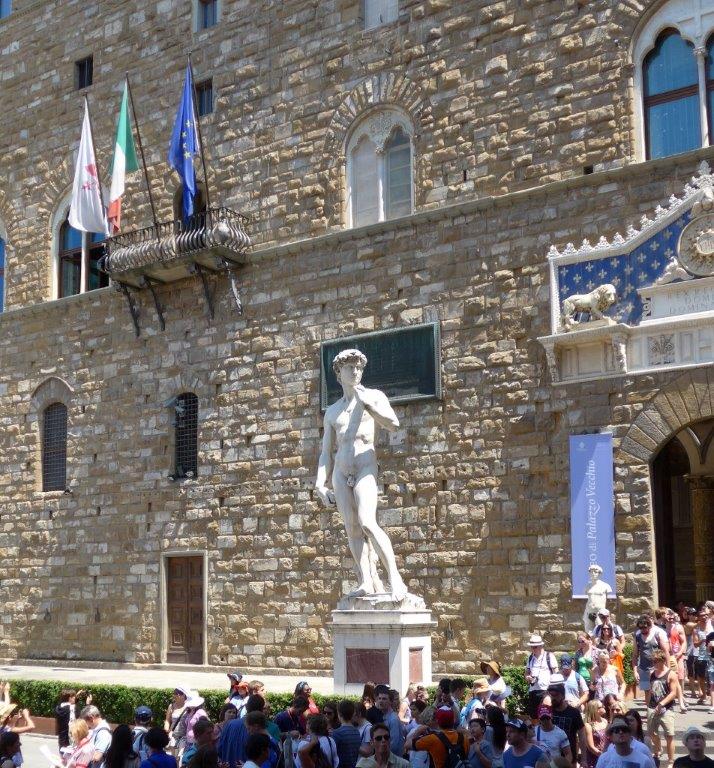
Piazza della Signoria Replica statue outside the Palazzo Vecchio.
DAVID
by George Repin
Michelangelo came to Rome at the age of 21. During the following five years he produced two outstanding and widely admired sculptures - completely different from each other in character – the Bacchus and the Pietá.
Now in the Museo del Bargello in Florence the unappealing figure of an obviously inebriated Bacchus stands, apparently off-balance, with a faun behind his legs stealing some of the god’s grapes.
The Pietá is a complete contrast. Originally commissioned by Cardinal Jean de Bilhères for his tomb in St. Peter’s, the intensely moving figures of the Madonna and dead Jesus are behind bullet proof acrylic glass in the Basilica of St. Peter in Rome. It was restored, after being damaged in 1972 by a mentally disturbed man wielding a geological hammer. It attracts thousands of viewers each day.
Michelangelo Buonarroti was born in 1475 in Caprese, near Florence, and always regarded himself as a Florentine. In 1501 on the advice of his father he returned to Florence where he was unknown although recognised in Rome for his work. However, soon after arriving he was given access to a large block of white carrara marble and awarded the commission to produce a statue of David.
The statue was intended to be one of a series of statues of the prophets to be installed on the flying buttresses of the Duomo – Brunelleschi’s Cathedral in Florence.
Michelangelo was faced with two problems. He had to remove drapery carved on the block by another sculptor and he had to cope with the hardness, resistance and brittleness of the carrara marble which had been quarried forty years earlier. Carrara is best carved when it is fresh from the quarry.
When Michelangelo was given the 17 foot block it was lying on the ground. It is not known how much carving he was able to do before it was raised to the vertical. After it was raised, scaffolding had to be built around it so that Michelangelo could reach it. As a result he could never step back to see the figure as a whole as the work progressed.
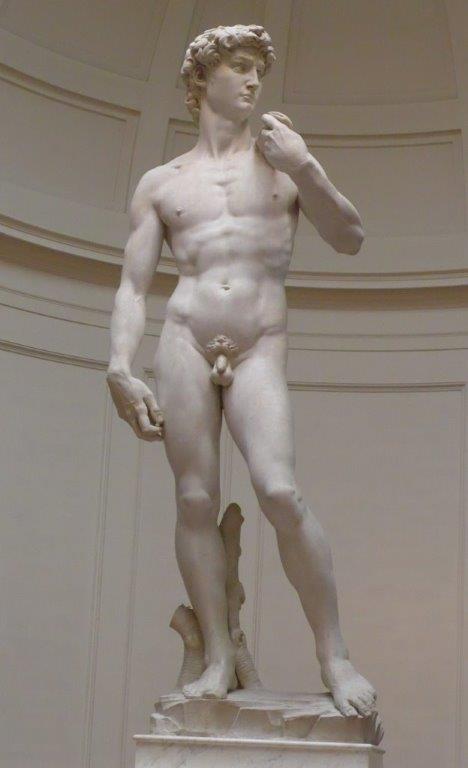
David.
An apparent disproportion of the head and the hands, when we look at the statue today, is a result of adjustments made by the sculptor because of the intended positioning of the statue high above the ground. Unlike previous statues of David by Donatello and by Verruchio which depict David with the head of the dead Goliath at his feet, Michelangelo showed David before the battle, with his slingshot at the ready.
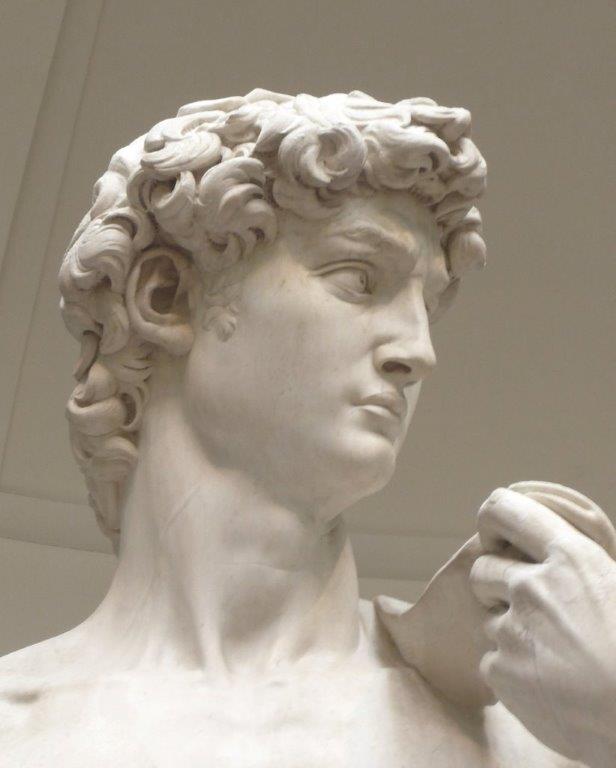
David Head - close ups.
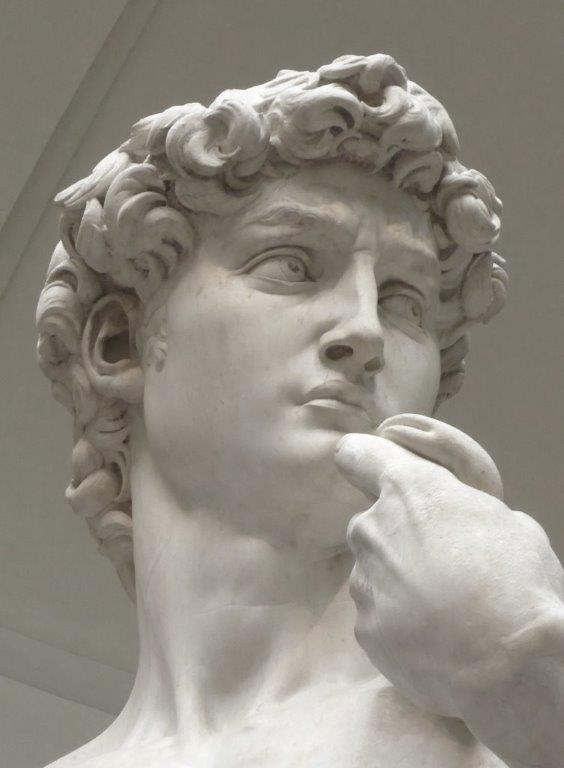
When the Florentine government saw the magnificence of the completed work they realised that it would be wasted high on a buttress of the cathedral and decided to move it from the cathedral workshop to the Piazza della Signoria in the centre of Florence. An interesting question is whether any consideration had been given to the practicality of lifting and positioning so heavy an object high above the ground.
Before moving the statue a practica (a group of citizens from all professions) was formed to decide where it should be placed. Thepractica included Botticelli and Leonardo da Vinci. By a majority of votes it was decided that it should be placed on a high pedestal in front of the Palazzo Vecchio where it stood until 1873 when it was moved into the Academia Museum (Galleria dell’Accademia) built to house it. A replica replaced the original statue. It took three days to move the statue, slung on ropes on a wooden cart rolling on logs, from the cathedral to the Piazza della Signoria.
Visitors queue for hours to enter the Academia to see David which is regarded as one of the most magnificent examples of the sculptor’s art.
Michelangelo died in 1564 the year that William Shakespeare and Galileo Galilei were born. He was in his 89th year, having lived twice as long as men usually lived at that time. His tomb is in the Church of Santa Croce in Florence with the tombs of notables, such as Galileo Galilee, Nicolaus Machiavelli, Gioachino Rossini and Leonardo da Vinci close by.
There is also an empty tomb built in 1829 for Dante Alighieri who, however, is buried in Ravenna – but that is a story for another time.
Photographs by George Repin in June, 2014
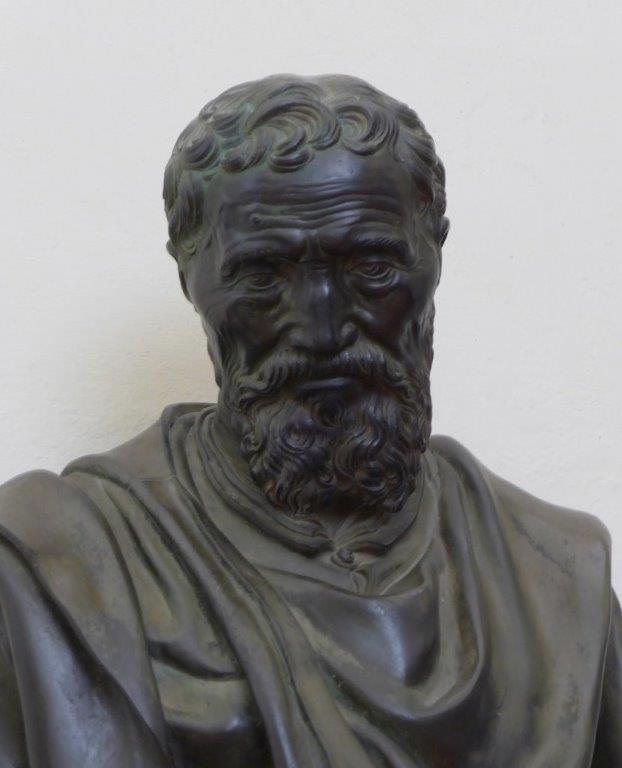
Bust of Michelangelo in the Academia Museum.
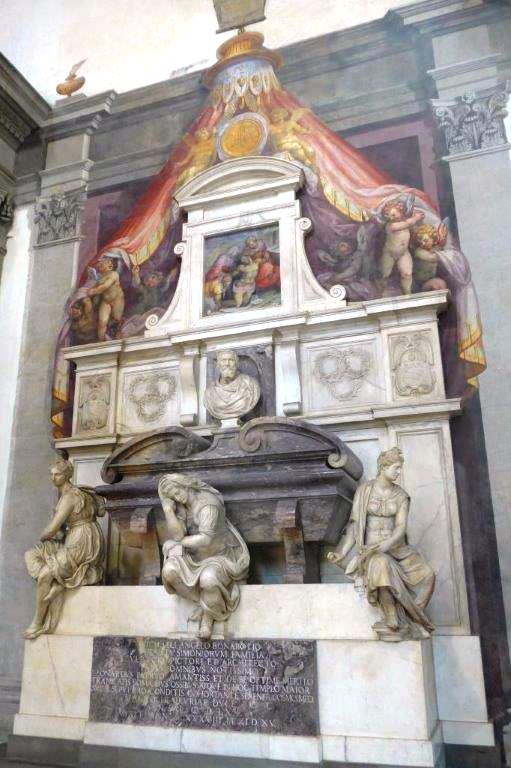
Michelangelo's tomb in Santa Croce.
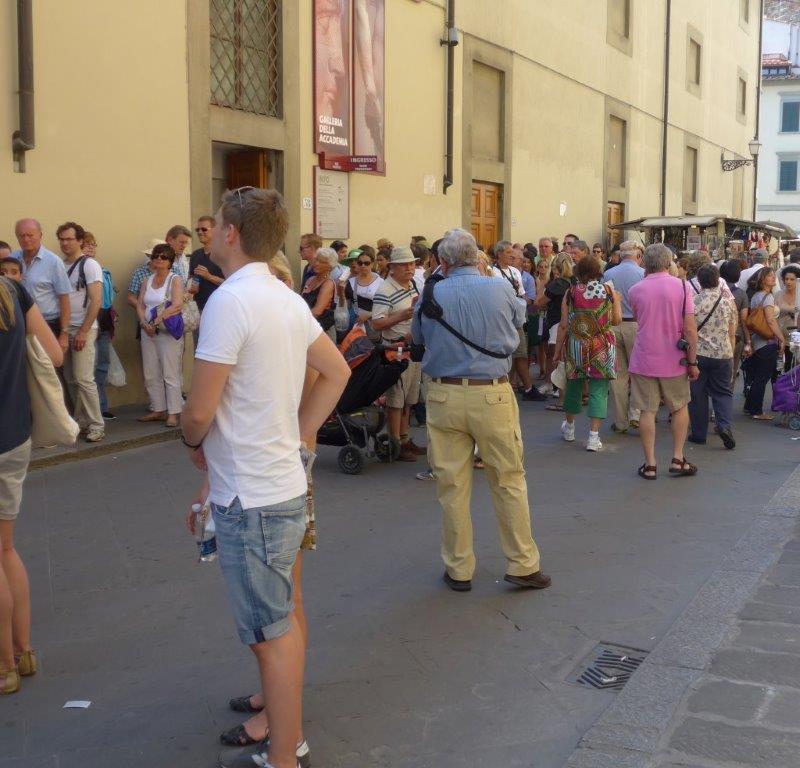
Visitors waiting to enter the Academia.
Copyright George Repin 2014. All Rights Reserved.